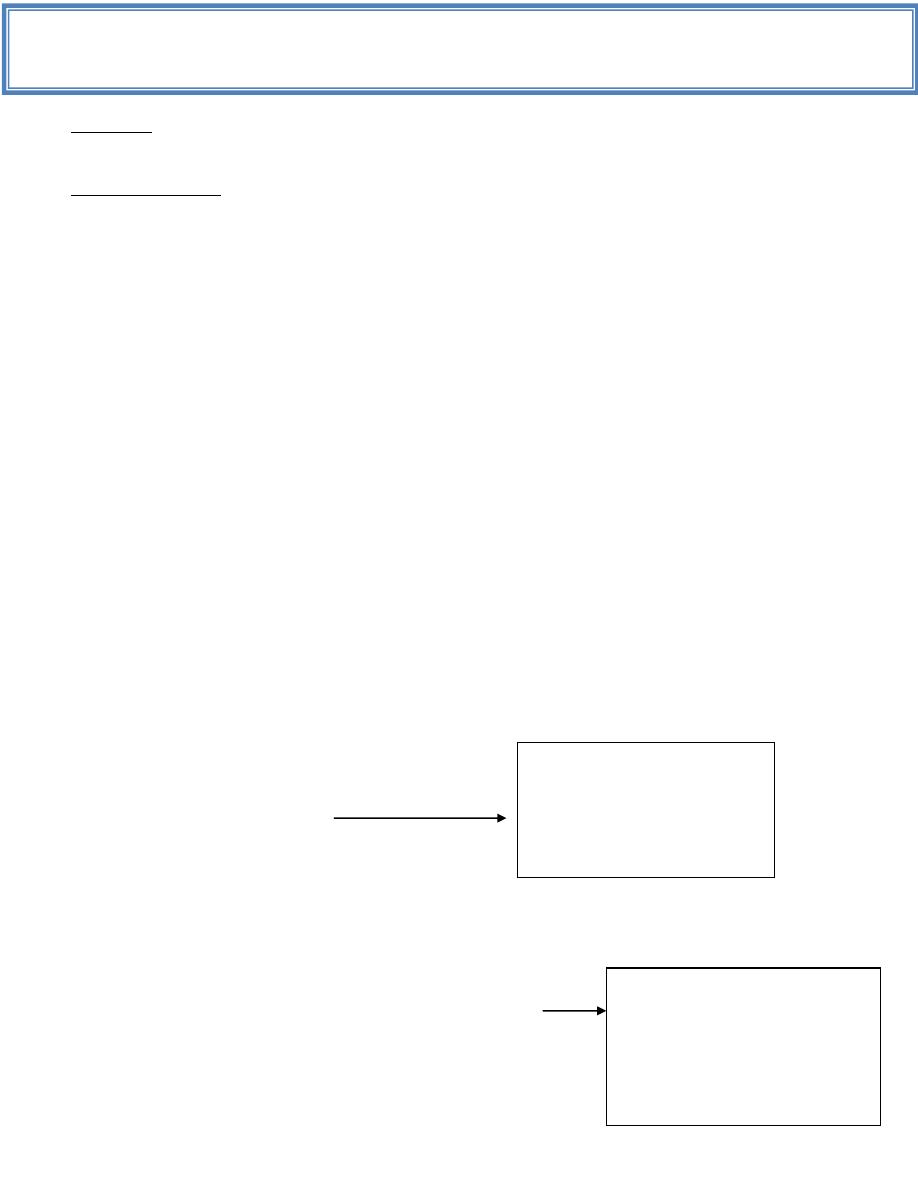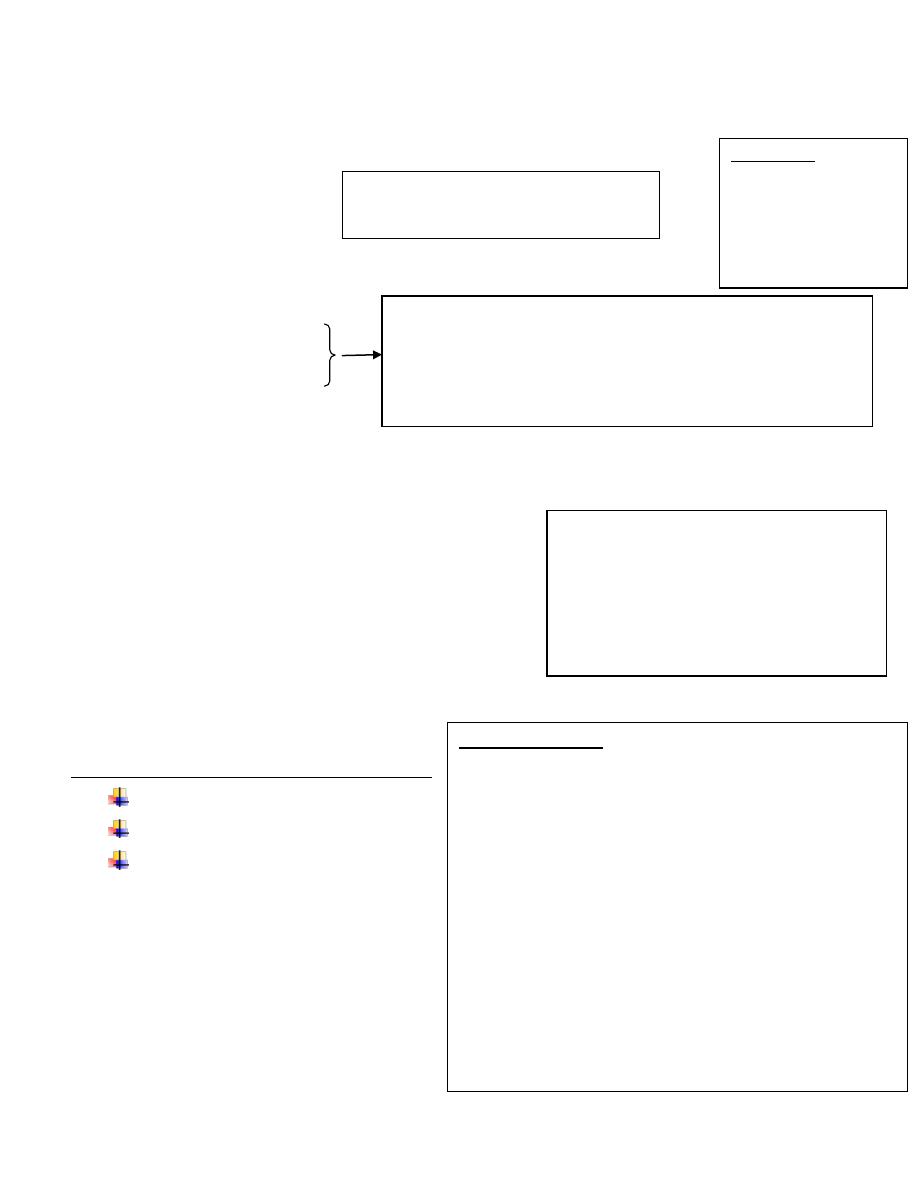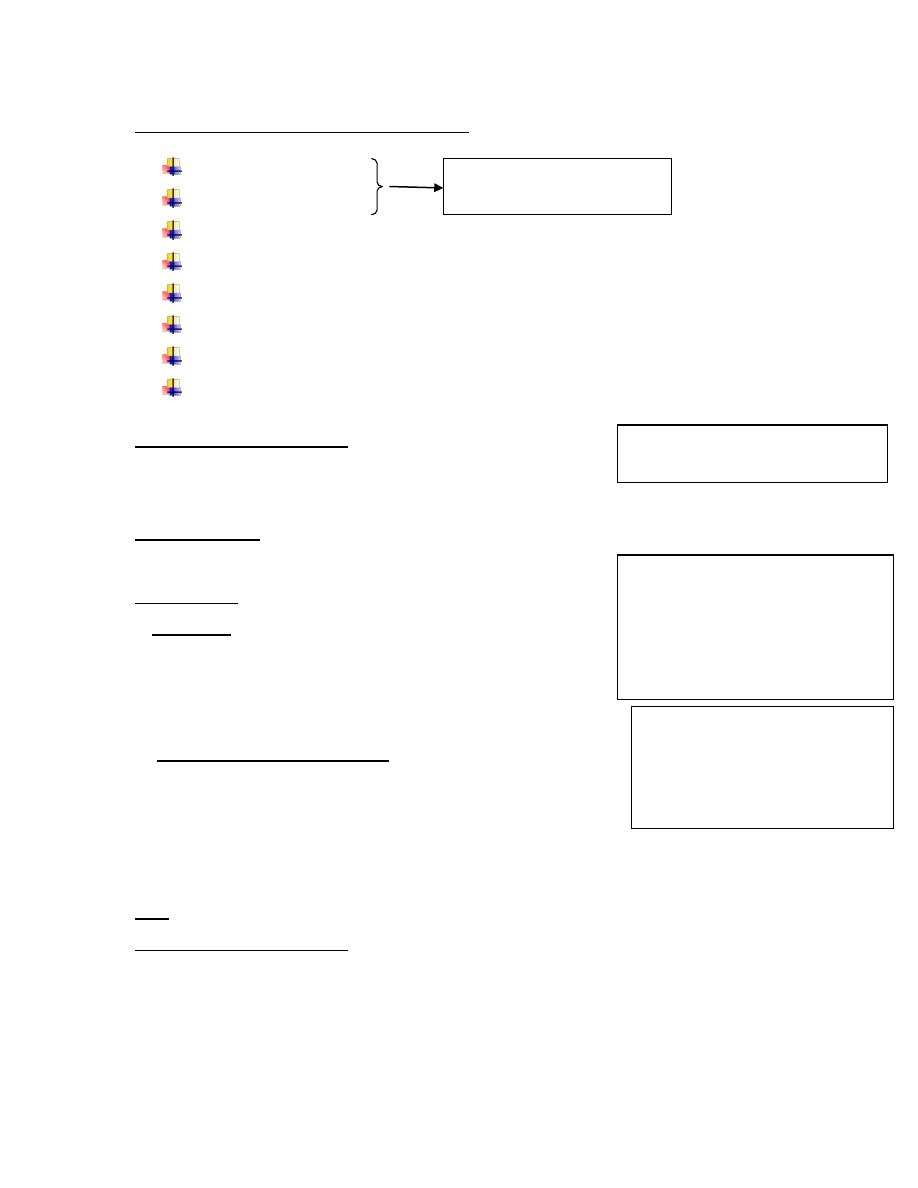
1
Diarrhea: increase frequency, consistency and liquidity of stool that is
observed by the mother.
Diarrhea (WHO): > 3 bowel motions/day (except for babies who are
exclusively breast fed.
Approach to acute diarrhea: <14 days.
History: Same history but should include (thirst and UOP) to estimate the
severity of dehydration.
Feeding Hx: should include:
Type of feeding: breast, Bottle or mixed.
If Bottle feeding:
-sterilization method (boiling for 10 min.)
-preparation of milk.
-No. o bottles (should be= No. of feds +1)
-Type of milk.
Examination: we have to look for signs of dehydration:
1. Ant. Fontanel → should be: At sitting position + baby not crying ( .)مهم
2. Sunken eyes.
3. Mucus membrane.
4. Skin Turgor → should be <2 seconds, if >2 seconds → dehydration.
5. UOP.
Investigations:
1. Serum electrolytes:
2. RBS (random blood sugar).
3. Blood urea and serum creatinine.
4. CBC: -RBC and HB: Normal or ↓
-shift to left {e.g: neutrophia +band cells (bandemia)}
→ suggest shigellosis.
-PCV {normal or ↑(hemoconsitration)}
-platelet: normal or ↓ (in case of HUS)
-Na
+
(N.R 135-145 mEq/l)
-Ca
++
(N.R 8.5-11 mg/dl)
- K
+
(N.R 3.5-4.5 mEq/l)
-HCO
3
-
-PH
HUS: is a triad of:
1.Microangiopathic anemia (helmet and
fragmented RBC in blood film).
2. Thrombocytopenia.
3. Uremia.
Note: presence of 2 out 3 + predisposing
factors can make the Dx.
6th stage Pediatrics Lec.2
د.ربيع Session notes 2016/8/21

2
5. General stool exam: Mcroscopic, chemical and microscopic exam:
Macroscopic: volume, consistency, color …etc
Chemical: -PH→
-Reducing agents: if +ve
→ (e.g lactose intolerance)
-Occult blood.
Microscopic:
1. RBC
2. Pus cells
3. Fatty cells
4. Cysts or trophozoits.
_______________________________________________________________________
Approach to a pt. with chronic diarrhea: >14 days
We can classify chronic diarrhea into 3 types:
1) Chronic diarrhea without FTT.
2) Chronic diarrhea with FTT.
3) Chronic diarrhea with blood.
________________________
1)DDx of Chronic diarrhea without FTT:
Lactose intolerance.
Giardiasis.
Toddler’s diarrhea.
Color of stool:
-red →blood
-Non-bilious→ Cholera,
obst. Jaundice.
-Green → rapid transient
time (benign)
-Normal PH is alkaline (because of HCO
3
).
Whenever it’s acidic→ considered abnormal
(e.g lactose intolerance) except in breast fed baby.
DDx:
1
.Infection: Bacterial (shigella
, salmonella, yersenia,capelobacter…etc)
or protozoal.
2
. Cow’s milk allergy.
3
. IBD.
4
. Post antibiotic
psuedomembranous
colitis.
FFT: definitions:
Child with weight persistently <5
th
centile.
Child who had crossed 2 major percentiles
in a period of 2 months.
Child’s weight < 80% of the median
weight for the height
of the child.
NOTES: مهم باألمتحان
CASE1: Pt. with diarrhea get improving →develops
abdominal distention → what is the Dx? And how to prove
it?
A/-Dx: paralytic ileus from hypokalemia .
-Proof: by
##Auscultation →sluggish bowel sounds
##serum K
+
(If there’s no facility to do serum K
+
) then we
can do:
##ECG (flattening of T wave, prolonged QT interval)
CASE2: Pt with chronic diarrhea →develops bloody diarrhea
→ what is the Dx?
A/ Vit. K deficiency, because of antibiotic use →Kills bact.
Flora which can produce Vit. K.

3
Lactose intolerance:
Types:
1.Primary.
2. Developmental (very rare) → temporary →eg. Prematurity.
3.Secondary to (very common): celiac dis., Rota virus inf.,cow’s milk allergy…etc
How to Dx:
-Clinical: diarrhea, abd. pain & distension, exaggerated bowel sounds and
perianal excoriation.
-PH of stool: ↓
-Reducing substances: +ve
-Jejunal biopsy →Histochemical study→reduced lacose in brush border.
-lactose tolerance test: flat (no ↑ in glucose after CHO meal).
-H
+
breath test: ↑ (as aresult of bacterial fermentation of undigested lactose)
Rx: Lactose free formula (LF) → Isomil
Soy milk(isomil)→ for 2-4 wks then re-introduce
into ordinary formula.
_______________
Giardiasis:
How to Dx:
1. Finding trophozoites (not cyst) in FRESH stool: (25% +ve).
2. Dudenal aspirate: (75% +ve).
3. Metronidazol trial.
Rx: 20-30 mg/kg metronidazole for 10 days.
_______________
Toddler’s diarrhea:
How to Dx: by exclusion of other causes of
chronic diarrhea. (Correlate to IBS in adults).
Isomil used only in:
1.Galactossemia.
2. Lactose intolerance.
3. Cow’s milk allergy
Q/What is the difference in metronidazol use in
amebiasis and Giardiasis?
A/ in amebiasis:
50 mg/kg metronidazole for 2 wks in divided
dose to be followed by diloxanide furoateor
paromomycin to get rid of cysts in order to
prevent relapses

4
2)DDx of Chronic diarrhea with FTT:
Lactose intolerance.
Giardiasis.
Celiac Dis.
Cystic fibrosis.
Bact. Overgrowth.
UTI.
Endocrinpaties→ thyrotoxicosis, Addison’s dis., VIPomas
Cows milk allergy.
___________________
Celiac Dis.:
Presentation: Abd. pain & distension, chronic diarrhea (greasy, offensive stool)
poor weight gain, anorexia, vomiting …etc .
How to Dx:
1.Serology: anti-tissue transglutaminase IgA ab
and total IgA.
If anti-tissue transglutaminase Ab is ↑
and total IgA is normal then we have to do:
2. Dudenal or jejuna biopsy: Histopathological findings:
-Total or subtotal villous atrophy.
-Deepening of the crypts of langerhans (cryptitis)
-Intraepithelial and submucosal infiltration of lymphocytes and plasma cells.
## If the above findings was found + serology ↑ titer → definitive Dx.
Rx: Gluten-free diet for life long.
___________________
Can cause chronic diarrhea
WITH or WITHOUT FTT
NOTE: celiac dis. Is never diagnosed
<9 months age.
Celiac syndrome: diseases similar to
celiac dis. But it’s not celiac dis.:
-Tropical sprue.
- Giardiasis
-Malnutrition.
-Eosinophilic enteritis.
Note: Malignancy (lymphoma and
pancreatic CA) is a possible
complication of celiac dis.
Note: Gluten-free diet dose not
eliminate the risk of malignancy.

5
Cystic fibrosis:
How to Dx:
1. It can be diagnosed 1 hr. after birth because it can cause meconium ileus.
2. Sweet chloride test →>60 mmol/L .
3. DNA diagnosis.
Can cause bronchiectasis as result of recurrent chest infection→ can cause death.
Rx: Antibiotics + physiotherapy.
__________________
UTI: Very important → DDx of many complaints.
How to Dx:
1. GUE → >5 pus cells/HPF
2.Urine culture (main diagnostic method) : specimen:
- Mid-steam urine :
## >100,000 colony/ml of the same M.O →UTI
##10,000 colony/ml→ NOT UTI.
##10,000 - 100,000 → Suspicious → Repeat the test or do more accurate
method
-Suprapubic aspiration→ if single colony is recovered→ definitive Dx of UTI.
Or- Urine obtained by foly’s catheter→If single colony is recovered→UTI.
3. U/S
4. MCUG
If the above mentioned investigations are:
- Norml → No need for IVU.
-Abnormal → we have to do IVU to estimate the remaining functioning part of the
kidney →If the kidney is still functioning →it’s worth to do surgery for VUR dis.
→If the kidney is scarred → No need to do the corrective surgery.
To Diagnosis Vesicouretric reflux dis. In pt. with recurrent UTI.

6
Rx: cystitis →symptmatic Rx + Antibiotic (amoxicillin or 3
rd
generation
cephalosporin as cefixime) orally for 7-10 days.
Pyelonephritis→ Hospitalization +symptomatic Rx + Antibiotic (combination of
3
rd
generation cephalosporin + amynoglycoside) parenterally for 10-14 days to be
switched into oral therapy once the pt. is able to.
Cow’s milk protein allergy: (Casein protein):
Presentation: bloody diarrhea, abdominal pain, urticaria, runny nose and even
FTT.
How to Dx:
1. Challenge test.
2. Specific Ab
Rx: Extensively hydrolyzed formula.
____________________
3)DDx of Chronic diarrhea with Blood:
Post-antibiotic pseudomembranous colitis.
Note:
30-50 % of pt. with cow’s milk
allergy have soy protein allergy
